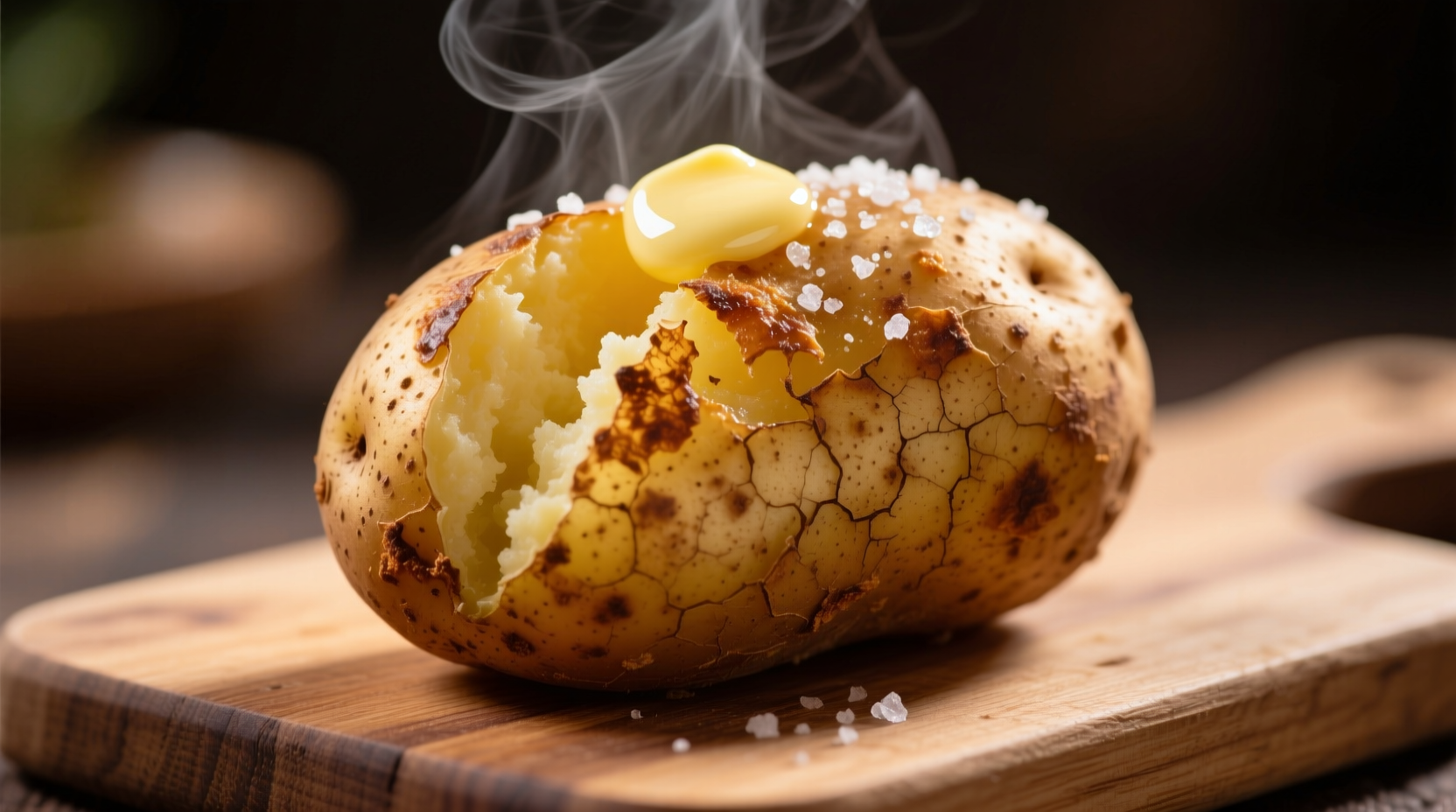The ideal baking temperature for a perfect baked potato is 400-425°F (204-220°C). At this temperature range, potatoes develop a crispy skin while maintaining a fluffy interior in 45-60 minutes. Lower temperatures (325°F/163°C) require longer cooking times (75-90 minutes) but yield more evenly cooked results, while higher temperatures (450°F/232°C) create exceptionally crispy skins but risk uneven cooking.
Have you ever cut into a baked potato only to find a hard, dense center or a soggy, undercooked mess? The secret to consistently perfect baked potatoes isn't just about time—it's about understanding how temperature transforms this humble vegetable from raw starch to culinary delight. Whether you're preparing a weeknight dinner or hosting a special occasion, mastering potato baking temperatures ensures restaurant-quality results every time.
The Science Behind Perfect Potato Baking
Potatoes contain starch granules that need to reach specific temperatures to properly gelatinize. When heated to 190-210°F (88-99°C), these starches absorb water, swell, and create that signature fluffy texture. The Maillard reaction—which creates delicious browning on the skin—begins around 285°F (140°C). Understanding these chemical processes explains why temperature control is crucial for perfect baked potatoes.
| Temperature Range | Cooking Time | Texture Result | Best For |
|---|---|---|---|
| 325°F (163°C) | 75-90 minutes | Evenly cooked, softer skin | Large potatoes, meal prep |
| 400°F (204°C) | 45-60 minutes | Ideal balance: crispy skin, fluffy interior | Standard preparation |
| 425°F (220°C) | 35-50 minutes | Extra crispy skin, slightly drier interior | Smaller potatoes, quick meals |
| Convection 375°F (190°C) | 30-45 minutes | Most even cooking, crispiest skin | Professional results at home |
Temperature Options Compared: Finding Your Perfect Match
Not all baked potatoes require the same approach. Your ideal temperature depends on your equipment, time constraints, and desired texture. The United States Department of Agriculture's Food Safety and Inspection Service confirms that properly cooked potatoes should reach an internal temperature of at least 190°F (88°C) for safe consumption and optimal texture (USDA Food Safety Guidelines).
Standard Oven Method (400-425°F)
This temperature range delivers the best balance for most home cooks. At 400°F, medium-sized potatoes (5-8 ounces) typically require 45-60 minutes. The higher end of this range (425°F) reduces cooking time while enhancing skin crispness. Always preheat your oven thoroughly—putting potatoes in a cold oven significantly extends cooking time and creates uneven results.
Low-Temperature Approach (325°F)
When time isn't a constraint, lower temperatures produce remarkably even cooking. This method prevents the exterior from overcooking before the center is done, particularly beneficial for larger potatoes. While it requires patience (75-90 minutes), the results feature uniformly fluffy interiors without any dry or hard spots.
Convection Oven Advantage
Convection ovens circulate hot air, allowing you to reduce the temperature by 25°F while maintaining cooking speed. At 375°F convection, potatoes achieve superior crispness in less time (30-45 minutes). This method represents the professional chef's secret for consistently perfect baked potatoes.

Testing for Perfect Doneness: Beyond Guesswork
Time estimates provide a starting point, but potato size and oven variations mean you need reliable doneness indicators. The fork test remains the simplest method—a fork should slide easily into the center with no resistance. For precision, use an instant-read thermometer: insert it into the thickest part of the potato. The ideal internal temperature range is 190-210°F (88-99°C).
Visual cues matter too. Properly cooked potatoes will feel slightly soft when gently squeezed (use oven mitts!). The skin should appear slightly shrunken with visible cracks, indicating moisture release during cooking. Avoid the common mistake of judging doneness solely by cooking time—always verify with multiple indicators.
Troubleshooting Common Temperature Issues
Soggy Skin
This typically occurs when potatoes steam instead of bake. Solutions include: drying potatoes thoroughly before baking, avoiding aluminum foil (which traps moisture), and placing potatoes directly on oven racks with a baking sheet below to catch drips.
Hard Centers
When the exterior appears done but the center remains hard, your oven temperature may be inaccurate. Invest in an oven thermometer to verify actual temperature. Alternatively, your potatoes might be larger than standard—increase cooking time by 15-20 minutes while checking internal temperature periodically.
Overly Dry Texture
Excessive dryness usually indicates overcooking or too-high temperatures. Try reducing oven temperature by 25°F and checking for doneness 10-15 minutes earlier. For future batches, consider the low-temperature method for more forgiving results.
Advanced Temperature Techniques for Culinary Excellence
Professional kitchens employ several temperature-based techniques worth adopting at home. Par-cooking involves partially boiling potatoes before finishing in the oven—this creates exceptionally fluffy interiors while reducing overall baking time. Another method: start potatoes at 425°F for 20 minutes to set the skin, then reduce to 375°F to finish cooking the interior without drying.
For maximum crispness, some chefs brush potatoes with oil and sprinkle with coarse salt before baking. The oil conducts heat more efficiently, while salt draws out moisture from the skin surface. Remember to pierce potatoes with a fork before baking—this allows steam to escape, preventing potential explosions from built-up pressure.
Food Safety Considerations Across Temperature Ranges
Proper temperature management extends beyond cooking. The USDA Food Safety and Inspection Service emphasizes that cooked potatoes should not remain in the "danger zone" (40-140°F / 4-60°C) for more than two hours. When serving baked potatoes with fillings like sour cream or butter, keep the potatoes above 140°F until served.
For leftovers, refrigerate cooled potatoes within two hours. When reheating, ensure they reach an internal temperature of 165°F (74°C) for safety. Never reheat potatoes in their original foil wrapping, as this creates anaerobic conditions where harmful bacteria can grow.











 浙公网安备
33010002000092号
浙公网安备
33010002000092号 浙B2-20120091-4
浙B2-20120091-4